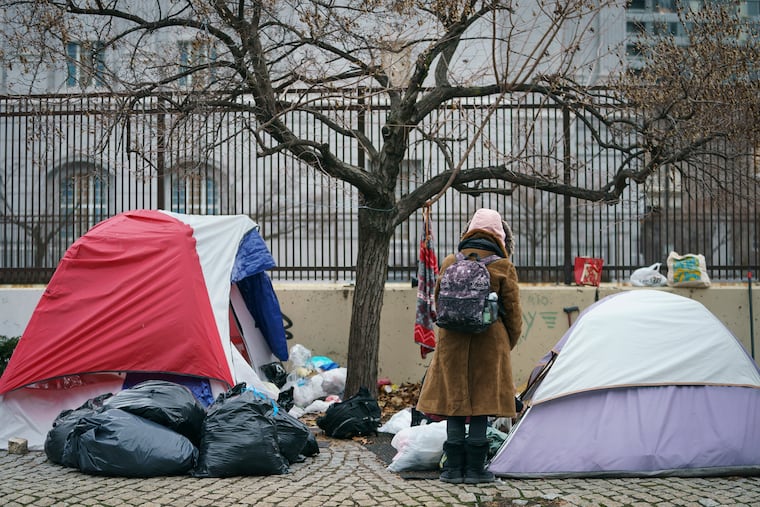Solving Philly’s homeless problem is a human imperative | Editorial
Philadelphia, so often first in line when bad news is handed out, is actually is showing declines in certain categories of homeless.

The roof over someone’s head should not be made of nylon. But that was the case for as number of homeless people inhabiting 18 tents on the Ben Franklin Parkway, which the city removed last week.
The “decampment” followed similar efforts in Kensington in the spring and in November of 2018 that cleared tent camps sheltering the homeless and followed a similar protocol — not just moving people, but making an effort to provide housing as well as treatment options.
Addiction and mental illness drive much homelessness, but not all. Economic hardship fueled by the lack of livable wages and affordable housing is another factor. The link to all is poverty and trauma. And recent reports suggest a crisis that goes well beyond Philadelphia.
In September, a report by the White House Council of Economic Advisors pointed out that over half million people in America go homeless on a given night in the United States. The report went on to fault policies of previous administrations, including too stringent regulation of the housing market.
Last week, the Department of Housing and Urban Development released its annual report to Congress on homeless numbers for 2019 and found that a little over half of states reported declines in homeless populations, with the rest reporting increases between 2018 and 2019.
According to HUD, numbers are increasing dramatically in California cities like San Francisco and Los Angeles, as well as some Northeast cities like New York and Boston. Philadelphia, so often first in line when bad news is handed out, is actually showing declines in certain categories of homeless, particularly families with children, and has fewer people living on the streets than other big cities.
That suggests that the city’s approach is working (as is the ground continually cultivated by Sister Mary Scullion). The city’s “housing first” approach doesn’t just ship people into a shelter system and demand they graduate into more permanent housing, but recognizes that without the stability of more permanent housing, underlying issues like addiction and mental health can’t be adequately addressed.
One promising idea announced last week: The Pennsylvania Convention Center is providing $500,000 in a challenge grant to encourage other businesses to help provide funds for permanent housing. John McNichol, the convention center CEO, says the problem goes beyond homeless people marring the view of the city from out-of-town visitors, saying that the solution is “not just a business imperative but a human imperative.”
That’s a shift in perception that is important to make, and not just by the business community. Many of us would prefer to look away than confront what homelessness forces us to confront: broken systems and people in trauma.
No one agency or department should have to shoulder the burden of solving this massive problem. The most direct solution is housing, which, according to the city’s Office of Homeless Services, costs about $14,000 a year to provide an address and services for a person. Considering the much higher costs that so many living on the streets incur — police, fire, hospitals, for a start — that’s a smarter way to solve this.